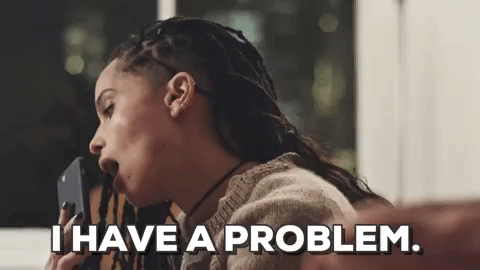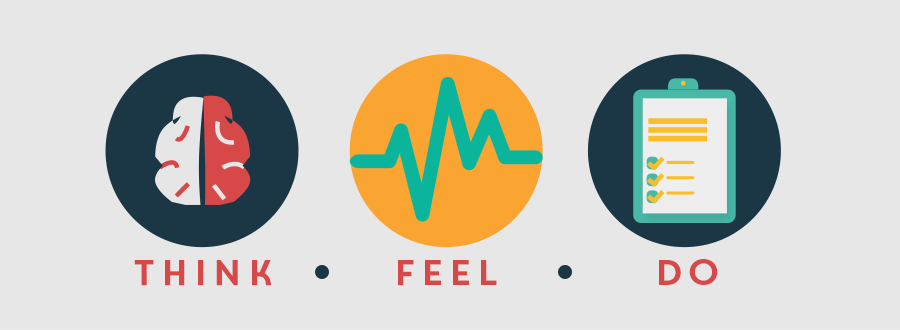🏁 5 steps for successful start-up marketing
What makes a start-up successful? A guide with practical examples.
As Head of Marketing of the app Too Good To Go, I was able to extensively address the question of how a start-up conducts successful marketing (by the way, much of what I've described here also applies to other "normal" companies).
Hello 👋 My name is Florian Schleicher and this is the FutureStrategies newsletter from FutureS. I'm glad you're reading along 💚 If you want to learn strategic marketing, my Simple & Sustainable Marketing Academy is just right for you.
In 2.5 years, we built a brand with Too Good To Go,
which was used by 10% of the Austrian population at the time,
over 52% knew the app against food waste,
we had the sixth-largest Instagram account of any brand,
won 4 EFFIEs (prizes for the most effective campaign in 2021) with a campaign around best-before dates, and
generated over 1,000 press mentions per year.
If you want to dive deeper on Too Good To Go,
I wrote a whole newsletter on our journey:
🤨 Is that success?
Yes and no.
I am very proud to have formed such a great brand with a team of great colleagues with a lot of heart and sweat. We have made a real hypergrowth journey.
But all this says nothing directly about success and the reason why the start-up is now no longer one, but a large scale-up company working with a variety of large partners.
The success I mean is sustainable success.
What we - the whole team of Too Good To Go - created was Impact.
As written about impact marketing a while back, sustainable success is about 3 factors:
🌏 Planet: Ecological integrity
🧍 People: Added value for people
💰 Profit: Shared prosperity
Value was added to the planet (valuable food was saved from the trash), to people (who could discover new things and eat cheaper), and money was made. That's how it scales.
🔁 How can this be replicated?
Successful startup marketing is built on 5 steps:
A precise marketing strategy,
a storytelling approach that creates attention,
a compelling content strategy,
multiple communication channels that convert, and
ongoing adaptation of marketing actions to the situation.
If the foundation works, it can be built upon again and again.
Let's start at the beginning:
♟ A clear marketing strategy
There are a variety of models for marketing strategies.
But at the beginning, there is always one thing: an analysis or diagnosis.
“The diagnosis defines or explains the nature of the challenge. A good diagnosis simplifies the often overwhelming complexity of reality by identifying certain aspects of the situation as critical. A diagnosis names or classifies the situation, linking facts into patterns and suggesting that more attention be paid to some issues and less to others.”
Richard Rumelt in Good Strategy, Bad Strategy
We need to understand where we are right now, and what the market and the communications landscape are currently doing.
Based on this, we can design a plan on how to position ourselves, which target groups we want to reach and how, and which channels we need to use for this.
“The greatest gift you’ll ever give your marketing is to say:
Stop. Let’s get the foundations right first, especially all the parts no one will ever see: positioning, guidelines, and infrastructure.”
Aaron Orendorff, Editor in Chief Shopify
A small example to illustrate: In the case of Too Good To Go, we knew at the beginning that the climate crisis is shaping our media landscape (we are here in the summer of 2019 so before Covid) and the key insight was that people want to feel like they can do something about it and journalists are also looking for positive stories.
So, without any finger-pointing, we showed how a small solution that everyone can do every day can help our climate.
For me, the most important and intensive step of any strategy is always the first one - understanding the problem we are facing, in connection with the solution approach we have.
“Then and only then, when you have precise understanding of both the question you are seeking to answer and the standard of proof you require, design specific tests for the elements that are critical to your choice.”
Especially in start-up marketing, I observe again and again that people start with a solution - a creative new idea, but rarely do they start with the problem that exists in the market and the target groups.
Also in the step of defining goals, there is often an overflow of goals, making it difficult for start-ups to maintain an overview.
My strategy tip, therefore: Two to three goals per half-year.
Sounds hard, but helps tremendously to keep focus and cover several miles in the right direction.
💬 A storytelling approach that creates attention
Stories make it easier for us to understand topics, problems, and solutions and there are different models for this as well (like the simple 4-step model I described).
When we have a clear strategy, we can tell them better. I like to work with the party principle here:
🥳 Excursus: Party Principle
Imagine you are at a party. It's already late and both you and all the other guests have already had a few drinks. Loud music is blaring through the room. How do you present your company? What story do you choose? How do you start and how do you end?
I also explained the principle in the business basics podcast (in german) with Lisa Maria Centeno.
If you can make it so that you and your counterpart still understand all the content and they are excited, then you have found the formula for your storytelling approach.
Or practically speaking:
"Did you know that 1/3 of all food ends up in the trash? Shocking, isn't it? That's a huge economic and ethical problem. But there is a solution to it. There's an app we can use to save all this delicious food from going to waste."
Of course, this is not everything and there are many other tricks for successful storytelling, but this describes the basis.
🎨 A stringent content strategy
Content is what reaches us every day on different channels.
Whether it’s on Instagram, TikTok, a TV spot, or in a newsletter.
How do we decide which content is the right one?
A good starting point is a content strategy:
There is a big trend around marketing: authenticity - the feeling of receiving "real" content (more on this in this article about authenticity).
The right text and the right image are also decisive and are fixed components of a good content strategy.
In the beginning, however, there is also our initial situation, needs, and problems.
What does that look like in our example?
During the first Covid lockdown, no food could be saved on Too Good To Go either. After all, no one should leave their own four walls. So what does an app against food waste post then? We quickly came up with the idea that food is not only wasted in restaurants, bakeries, cafés, or hotels - but also at home. So we created many posts about zero-food-waste recipes for our own kitchens. From bacon made from banana peels to piña colada made from leftover coconut milk. And so a successful content series was created for the Discuss & Educate category.
⚡️ Communication channels that convert
Communication needs media through which people can be reached.
The central medium of every start-up is currently its own landing page.
First impressions are often decisive.
As consumers, we come to a website and decide in a tenth of a second (study by Princeton University) whether we want to stay longer.
The crucial first step in designing a landing page is defining the goal.
What do we want to achieve on our website? What do we want users to do on it?
In most cases, it's conversion to purchase or download and to achieve that, we need to tailor our CTAs (call-to-actions) to that end.
Whatever be our attention span, it is no secret that given multiple links at hand, we would love to hop around and explore, thus moving away from the subject.
UX Planet
We need a clear focus of our messages and the entire page on the desirable outcome.
I also like to work with the Think-Feel-Do model for landing pages:
What do we want our target groups to think, feel, and do when they come to the website?
Back to our example?
I'm not a fan of the current Too Good To Go website because, in my view, it has lost a lot of the original clarity and structure we had a few years ago.
So I want to show it with another example: The start-up Schrankerl has a very clearly structured website - the focus is on booking a test meal, the target group (responsible persons in companies) is clearly placed in the center of the content and all further information can be found in the navigation.
Of course, there are many more important communication channels for conversion.
I'm a big fan of newsletters for marketing, as they give us a direct line to the target audience. With the right content strategy and a clear guideline, a lot of movement can be made toward making purchases.
But more on that another time.
🤹 Ongoing adaptation of marketing actions.
We now have a clear marketing strategy, a storytelling approach that works, a well-aligned content strategy, and marketing channels that help us convert.
Now we can build on that and shape our ongoing communications.
Here, I always recommend having a well-organized marketing calendar in place to give us an overview of our startup's planned activities.
This means that smaller activities as well as large campaigns can be well-planned and executed.
My work as the marketing manager of a start-up has always helped me a lot to have good sparring partners. In any company, it's easy to lose sight of the outside perspective and not see the forest for the goals.
I consider myself lucky to have had several very valuable sparring sessions with esteemed colleagues, nationally and internationally, in the start-up and in my environment, employees as well as superiors.
Therefore, my last tip is: Get a good, well-founded outside perspective. Someone who gives you security, asks you uncomfortable questions, shows you blind spots, and helps you move forward.
💡 Looking for more inputs?
Building successful startup marketing with impact is a big piece of work.
After all, we don't just want to build a new brand, we want to position it in a way that is powerful enough to last and help us achieve our goals.
These 5 steps for successful start-up marketing are a good starting point for all who are looking for a basis.
Each point in itself contains much more details, tricks, guides, and backgrounds that are important to create impact marketing.
Even more inputs, strategies, concepts, sparrings, and experiences I offer to my clients with my marketing studio FutureS.
Thanks for reading along!
Want more reading material?
✅ Green marketing with strategy - What does it take for strategic green marketing and which companies are doing a good job?
🌍🔜 The future is impact marketing - How will sustainable impact on planet, profit & people shape companies in the future and what is impact marketing?
📚 3 books, 2 newsletters, and 1 podcast - Content that inspired me last year.
🧩 4 simple steps for successful storytelling - Why do stories exist? What contribution do they have to strategic marketing today? And how do we tell them best?
PS: You can also read this posting in German.















